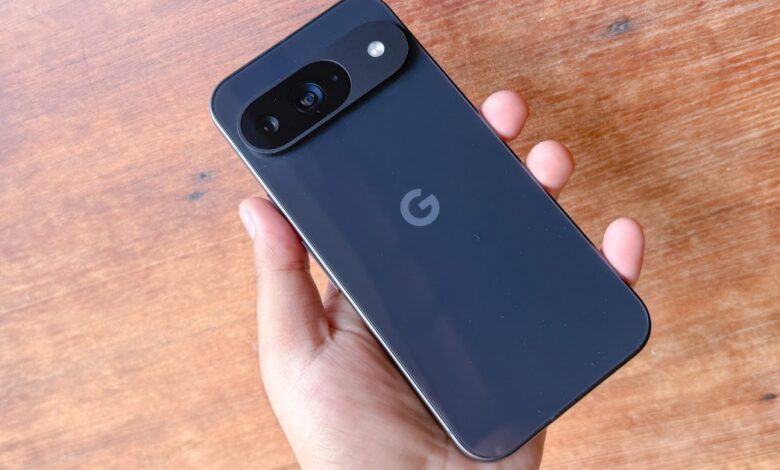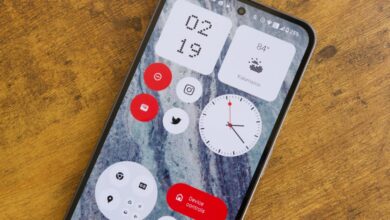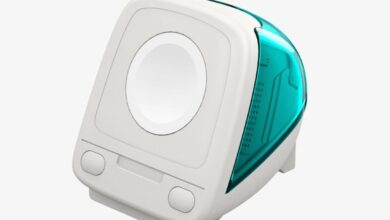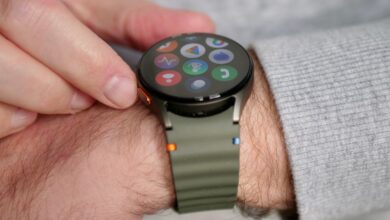I tested the best Apple and Samsung’s best, but I’ll pick the Google Pixel 9

A few weeks ago, I returned to my Google Pixel 9 to test Gemini’s next-gen AI features. It was hard letting go of the OnePlus 13, arguably one of the most rewarding phones out there. Plus, given the “Pixel history,” I had prepared myself for a bumpy ride, just like the Pixel 8, and the Pixel 7 before it.
To my surprise, the Pixel 9 fared a lot better. It feels snappier on Android 16, takes sharp pictures, and lasts all day easily. The only thing pulling it down? The sporadic bad apps and updates. It’s not enough to consider a replacement, but it’s certainly frustrating in bits and pieces.
Overall, I think this is the most refined Pixel that Google has made to date. And with the regular discounts that often shave hundreds of dollars from its official asking price, there is little reason to look elsewhere. But ultimately, it’s what you get from the phone that really made me question uber-expensive devices like the Samsung Galaxy S25 Ultra or iPhone 16 Pro Max, which cost over 50% as much.
Feels great, fixed flaws
If I were to put a cumulative number on my usage spell for the Pixel 9, it falls close to six months. I’ve never put a case on the phone, and the only protection I applied on it was a thin screen guard. Yes, despite Corning’s claims, the Gorilla Glass Victus 2 shield can’t survive a pocket loaded with keys, coins, thumb drives, and candies. The shiny glass rear shell is no different.
On the other hand, the metallic frame with a satin finish has held up pretty well. There are no scuff marks on it, and I haven’t noticed any other forms of hardware hiccups so far. This phone feels every bit as premium as your average Samsung Galaxy or iPhone, and you really need to feel it in your hands to get a grasp of the fantastic build.
Google got the ergonomics right on this one, even though it’s not the lightest phone out there. It is, however, instantly recognizable and doesn’t suffer from the identity crisis that you will find on Samsung and Apple devices that have looked virtually identical for the past few generations.
I’ve had my friends and co-working buddies repeatedly telling me that the Pixel 9 feels like the premium device Google always intended to make. The only problem? It runs hot, and in unpredictable spots. It handled games well, but got warm while using Maps for navigation.
The banking app kept crashing and working up the phone’s thermal hardware, while long edits in Adobe Express and the Instagram Edits app sailed smoothly. A quick look at the Google Community forum suggests that it’s due to poor app patches and optimization from developers, but it’s weird to notice these stutters.
One of my biggest issues with the Pixel 9 was the slow image processing in the camera app last year. I can confirm that the woe is gone. I’ve extensively tested hi-res and portrait capture modes, and I could see the final image in less than a second.
There’s no lag in switching from the viewfinder to the image preview, and even with images that required manual frame adjustment, there was no unwanted delay at any stage.
Aside from those sporadic jitters, everything worked flawlessly atop the stable build of Android 16. My secondary driver for personal communication is an iPhone 16 Pro Max, which is expectedly fluid, but doesn’t have the same snappy feel as the Pixel 9. Oh, and I absolutely love the new predictive back gesture introduced in Android 16.
Leaving a mark, where it matters
Let’s address the elephant in the room. The Tensor G4 processor. For an average smartphone user who is not too deep into demanding games or obsessed with maxing out in-game graphics settings, the Pixel 9 will serve you just fine. The hiccups with a slow camera capture have been fixed, and I didn’t feel the need to boot in safe mode to find bad apps.
The day-to-day activities, in a nutshell, fare smoothly. The numbers defy logic, however. Talking about benchmark comparisons, well, the Tensor G4 scores nearly half as much as the Qualcomm Snapdragon 8 Elite in phones like the Galaxy S25, and even lower than Apple’s A18 Pro inside the iPhone 16 series.
It’s not even a substantial upgrade over the Pixel 8’s Tensor G3 processor. So, is the Pixel 9 a laggard? Yes. Is the real-life experience reflective of those tests? No. Making calls, texting all day, watching social videos, letting off some steam in Diablo: Immortal, snapping pictures, and editing short clips for Instagram. All these activities are handled just fine.
At this point, we also need to change the definition of “processing power.” A healthy bunch of experiences on the Pixel 9 are now powered by AI. And more specifically, the on-device workflows running the Gemini Nano model, thanks to the on-board AI accelerator chip referred to as a TPU.
On-device AI processing now lends a hand with video rendering, translation, scam detection in calls and messages, accessibility features like talkback, Smart Reply in Gboard keyboard, audio summarization, and even media editing. Remember Magic Editor and Pixel Screenshots? Yeah, all that, and more.
How does it stand out?
You see, AI is now a transformative part of the Android experience, and the Pixels get the first (often exclusive) dibs on it. And it’s not just the vanilla experience and quick access to OS upgrades that matter here, but also those exclusive Pixel Feature Drop updates that add unique features to Google’s phones.
Ever since the Pixel 9 series was released, it has received features like audio noise eraser for videos, underwater photography mode, theft detection lock, private space, AI-powered call screening, live call transcripts, expressive captions, Identity Check, and more.
Android 16 — riding atop the Pixel 9 series — is the smartest mobile OS out there, at least when it comes to protecting users from scams and digital fraud. With Gemini deeply integrated everywhere and new capabilities like Project Astra changing how we interact with a phone, what you get is a one-of-a-kind experience.
Of course, all that AI chatter doesn’t mean the Pixel 9 gets the basics wrong. The battery life is reliable and I never had to pull my power bank mid-way through the day. It’s not the fastest charging phone out there, but the competition from Samsung or Apple isn’t doing anything dramatically better despite the high asking price.
I haven’t run into any glaring call or network reception issues yet, so there’s that assurance. The camera experience continues its hot streak. And thanks to Android 16’s optimizations, there are more granular controls to compose the frame. Portraits turn out fantastic, and night mode shots continue to wow on Google’s entry-point flagship phone.
The overarching theme with the Pixel 9 is that it has matured a lot, especially after the Android 16 update. And at its current asking price of $799, it doesn’t miss a beat where you can outright reject it. On the contrary, it gives pricier Androids and iPhones a run for their money. If it’s reliability you seek from your phone, the Pixel 9 has truly evolved in that parameter.
And if you see a deal on this one, grab it to sweeten the experience.





